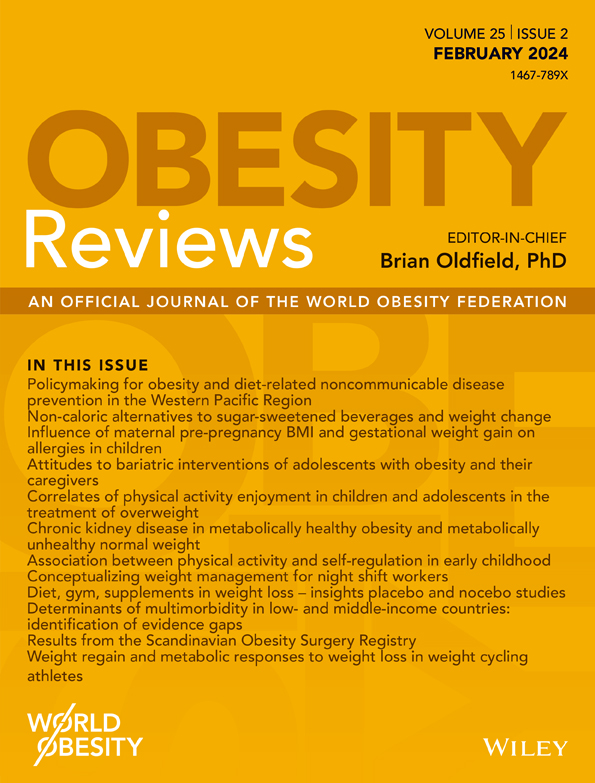Knee Extensor Structure and Function in Children, Adolescents, Adults, and Older Adults With Obesity: A Systematic Review and Meta-Analysis
Abstract
Objective
This study aims to evaluate the association between obesity and both absolute and relative measures of knee extensor muscle structure and contractile function across different age groups, including children, adolescents, adults, and older adults.
Methods
A search for potential studies was performed in four electronic databases. Data were meta-analyzed using a random-effects model for our primary outcomes of knee extensor structure (muscle size and quality) and function (maximal force/torque, rapid torque, and fatigue) and compared between those with or without obesity in each age group.
Results
The findings indicate that obesity significantly increases absolute measures of knee extensor maximal contractile function and muscle size. However, obesity was associated with a decrease in relative measures of maximal and rapid contractile function and muscle quality. The association of obesity with these muscle characteristics varied by age group, with the effects on knee extensor structure and function diminishing with age.
Conclusions
This systematic review and meta-analysis demonstrate that while obesity enhances absolute knee extensor muscle size and maximal force/torque, it detrimentally affects relative muscle function and quality, particularly related to activities of daily living. These effects are less pronounced in older adults, suggesting that age modulates the impact of obesity on muscle structure and function. The findings underscore the importance of interventions targeting the improvement of relative muscle function and quality in individuals with obesity. Further research is necessary to better understand these relationships and to develop more effective intervention strategies for obesity.
Registration
This protocol was prospectively registered in the Open Science Framework (DOI: 10.17605/OSF.IO/ZGUK6).


 求助内容:
求助内容: 应助结果提醒方式:
应助结果提醒方式:


